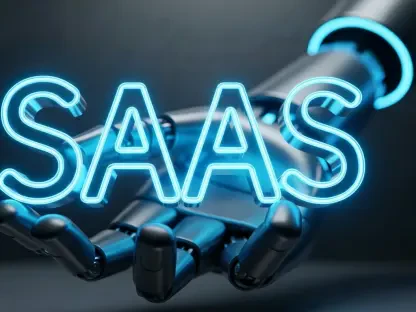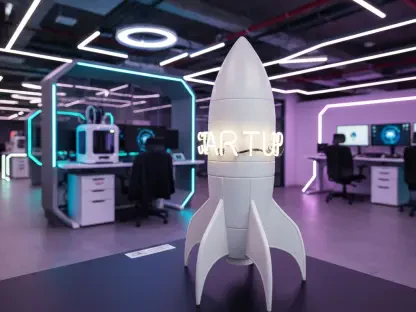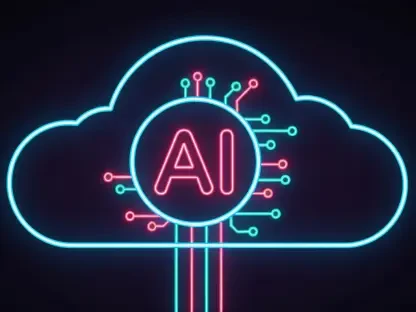Today, we’re thrilled to sit down with Vijay Raina, a leading expert in enterprise SaaS technology and a thought leader in software design and architecture. With his deep understanding of how AI is reshaping B2B go-to-market strategies, Vijay offers invaluable insights into the rapid evolution of SaaS tools, the efficiency gains from AI adoption, and the critical steps companies must take to stay competitive. In this conversation, we explore how AI is transforming sales and marketing approaches, the challenges of integrating AI into existing systems, the importance of hands-on involvement in deployments, and the broader trends shaping the future of the industry.
How did you first come to see AI as a game-changer for B2B go-to-market strategies?
My realization came a few years back when I saw early AI tools automating repetitive tasks in sales pipelines. It hit me during a project where we cut lead qualification time by half using basic AI models. That was just the tip of the iceberg. Today, AI isn’t just about saving time; it’s about scaling entire operations with minimal human overhead. I’ve seen companies rethink their entire approach—fewer sales reps, smarter outreach, faster customer onboarding—all because AI can handle volume and personalization at a level humans simply can’t match.
Can you share a standout story of a company using AI to scale dramatically with a lean team?
Absolutely. I recently worked with a SaaS founder who took their company from $50 million to $100 million in annual recurring revenue with just a handful of sales reps—five, to be exact—and a robust set of AI agents. What stood out was their focus on inbound leads, over 10,000 a month, funneled through AI for qualification and prioritization. In the past, scaling like that would’ve required a sales team of 100 or more. Their AI handled everything from initial outreach to follow-ups, allowing the human reps to focus on closing high-value deals. It’s a perfect example of efficiency meeting effectiveness.
What’s the biggest myth B2B leaders believe about implementing AI in sales and marketing?
Many think AI is a plug-and-play solution—that you can just buy a tool, set it up, and watch the magic happen. In reality, AI requires constant training and tuning to align with your specific business needs. I’ve seen leaders underestimate the time and effort needed to integrate AI into their workflows. Without active involvement, the results are mediocre at best. AI isn’t a replacement for strategy; it’s a tool that amplifies it when used thoughtfully.
Why do you think so many companies are lagging in adopting AI for their go-to-market efforts?
A lot of it comes down to fear of the unknown and resistance to change. Some companies worry about the upfront costs or disrupting their existing processes. Others lack the internal expertise to even start. But the real risk is in waiting too long. The gap between AI-native companies and traditional ones is widening fast. If you’re not experimenting now, you’re likely to be outpaced by competitors who are already reaping the benefits of lower costs and faster growth.
How has your own organization’s journey with AI evolved over the past year or so?
We started from scratch not too long ago—no AI agents in production at all. Within a few months, we rolled out nearly 20 agents across sales, support, and operations. It was a steep learning curve, but the trigger was seeing how much faster we could qualify leads with AI-driven SDRs. The pace of change surprised even us. Now, we’re constantly iterating, training new models, and exploring how to push AI into marketing, which is still a bit behind sales in terms of adoption.
Can you give a specific example of how AI has made a difference in your lead generation or sales process?
One of our AI SDRs has been a game-changer for lead qualification. It handles inbound inquiries, scores them based on fit, and schedules follow-ups with the right team member—all before a human even gets involved. We’ve seen a 30% increase in qualified leads reaching our sales team because the AI filters out noise so effectively. It’s not perfect yet; we still tweak its responses weekly, but the time savings and focus it brings to our human reps are undeniable.
What was the hardest part of integrating AI agents into your operations, and how did you tackle it?
The toughest challenge was getting the AI to understand our unique customer language and pain points. Early on, the responses felt generic and sometimes missed the mark. We overcame this by dedicating time to train the models with our own data—think call transcripts, email threads, and feedback loops. It took hands-on effort from the team, including myself, to iterate daily until the AI started sounding like us. Patience and persistence were key.
You’ve mentioned marketing lags behind sales in AI adoption. What’s holding it back, and what’s on the horizon?
Marketing often deals with more nuanced, creative tasks—crafting brand messages or predicting trends—which are harder for AI to nail without heavy customization. Sales tasks like lead scoring are more structured, so AI fits in easier. But the gap is closing. We’re working on AI tools for content personalization and campaign optimization that can analyze customer behavior in real time. I expect marketing AI to catch up within the next year as models get better at handling unstructured data.
Why do you believe founders and leaders need to be directly involved in AI deployments rather than just outsourcing them?
Hands-on involvement is critical because no one understands your business like you do. If you just buy a tool and hand it off, you miss the learning that comes from seeing where it fails and why. I’ve been part of deployments where I’ve had to tweak scripts and debug issues myself. That process taught me more about our customers and gaps in our process than any report could. Without that insight, you’re just guessing—and likely wasting money.
What’s a common pitfall you’ve seen when leaders try to implement AI without rolling up their sleeves?
The biggest mistake is assuming the tool will work out of the box. I’ve seen founders spend big on AI solutions, then get frustrated when the results don’t match the hype. Often, it’s because they didn’t invest time in training or aligning the tool with their specific goals. The outcome is a half-baked deployment that doesn’t deliver value and ends up shelved. Getting involved early prevents this by ensuring the AI actually solves real problems.
For someone new to AI, where should they start with a deployment, and how much time should they plan to commit?
Start small with a specific pain point—like automating lead follow-ups or customer support tickets. Pick a tool that addresses that issue and commit to being part of the setup. Plan to spend a few hours a week for the first month or two, working on training and reviewing outputs. It’s not a full-time job, but it does need consistent attention. The goal is to learn through doing, so you can scale up to bigger deployments with confidence.
AI-native companies seem to burn less cash than traditional SaaS businesses. What’s behind this, and how can older SaaS firms adapt?
AI-native companies spend less because they rely on automation for tasks that used to require large teams—think sales outreach or customer onboarding. Their unit economics are just better when AI handles the heavy lifting. Traditional SaaS firms can adapt by identifying areas where AI can cut redundancies, like support or lead gen, and reinvesting those savings into growth. It’s about starting with low-hanging fruit and building from there, even if it means rethinking old playbooks.
What’s driving the trend of AI companies hitting revenue milestones much faster than classic SaaS businesses?
It’s a mix of product-led growth and AI efficiency. These companies can onboard customers quicker with automated experiences and reach wider audiences through viral distribution, often at lower costs. AI also shortens sales cycles by personalizing outreach at scale. I think this speed is sustainable for now, as long as the tech keeps improving and customer expectations align with self-serve models. But it does raise questions about long-term retention.
What’s your forecast for the role of AI in B2B go-to-market strategies over the next few years?
I see AI becoming the backbone of every go-to-market strategy within three to five years. We’re moving toward a world where human reps focus solely on high-touch, strategic work while AI handles 80% of the operational load—everything from lead scoring to customer success check-ins. The companies that win will be those who integrate AI not as a bolt-on but as a core part of their systems, constantly learning and adapting. The pace of change is only going to accelerate, and hesitation will be costly.









